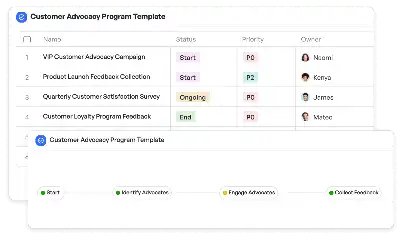Content Taxonomy Development Guide
Achieve project success with the Content Taxonomy Development Guide today!

What is Content Taxonomy Development Guide?
The Content Taxonomy Development Guide is a structured framework designed to help organizations categorize and organize their content effectively. It provides a systematic approach to defining categories, metadata, and relationships between different content types. This guide is particularly important in industries like e-commerce, healthcare, and education, where managing large volumes of diverse content is critical. By using this guide, teams can ensure consistency, improve searchability, and enhance user experience. For example, in e-commerce, a well-defined taxonomy can streamline product categorization, making it easier for customers to find what they need.
Try this template now
Who is this Content Taxonomy Development Guide Template for?
This template is ideal for content managers, data analysts, and project managers who deal with large-scale content organization. Typical roles include e-commerce product managers, healthcare data specialists, and educational content curators. For instance, a healthcare data specialist can use this guide to categorize patient records and medical research, ensuring compliance and accessibility. Similarly, an educational content curator can organize learning materials into intuitive categories, enhancing the learning experience for students.

Try this template now
Why use this Content Taxonomy Development Guide?
The Content Taxonomy Development Guide addresses specific challenges such as inconsistent categorization, difficulty in content retrieval, and lack of metadata standards. For example, in marketing campaigns, inconsistent taxonomy can lead to misaligned messaging and reduced campaign effectiveness. This guide provides clear steps to define categories, map metadata, and validate taxonomy, ensuring that content is organized logically and efficiently. By solving these pain points, teams can achieve better content management, improved user experience, and enhanced operational efficiency.

Try this template now
Get Started with the Content Taxonomy Development Guide
Follow these simple steps to get started with Meegle templates:
1. Click 'Get this Free Template Now' to sign up for Meegle.
2. After signing up, you will be redirected to the Content Taxonomy Development Guide. Click 'Use this Template' to create a version of this template in your workspace.
3. Customize the workflow and fields of the template to suit your specific needs.
4. Start using the template and experience the full potential of Meegle!
Try this template now
Free forever for teams up to 20!
The world’s #1 visualized project management tool
Powered by the next gen visual workflow engine




